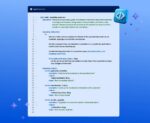A key part of the success that Visual Studio has enjoyed is the robust ecosystem created by third-party component vendors. While Microsoft has done a great job of adding features to Visual Studio, there are limits to what it can provide. The tools in the box just cannot be all things to all people, and this is where the ecosystem plays an enormously important role in filling niches both large and small. In some cases, the products from the component partners guide feature development for Visual Studio itself, with Microsoft including components from partners in Visual Studio, even if only in the form of trial or cut-down versions. This is how Dotfuscator (by PreEmptive Software) ended up included in past versions of Visual Studio.
I got the opportunity to talk to representatives from a number of the most prolific component vendors about what they are doing to make things better and easier for Visual Studio developers. Here is a breakdown on what we can expect from each of them now that Visual Studio 2012 is out of the gate:
Of the companies covered here, Aspose is the only one I could not reach for comment in time for inclusion in this article, but it still bears mentioning. The reason I feel this way is that, time and time again, Aspose is the answer I hear from experienced developers when asked for recommendations for how to handle file format challenges, especially when it comes to dynamic generation of PDF files. The tagline for the company is “Your file format experts.” PDF files are so popular because running Office on a server is just not the best idea historically, but Aspose also offers tools for Office file formats without requiring office applications like Word or Excel to be installed on the server.
ComponentArt specializes in providing all kinds of graphical data representation components for all Visual Studio 2012 application types with the various flavors of its Data Visualization suite. The company sees the sea change that Windows 8 is bringing as a huge opportunity. In talking to the company’s president and CEO, Miljan Braticevic, he cited the projected 400 million Windows 8 deployments by the end of 2013 mentioned earlier in the article.
#!
GrapeCity has recently acquired ComponentOne and is doing business going forward in most of the world using the ComponentOne name, but it is selling the combined product lines. From talking to lead developer evangelist Russ Fustino, I learned that Windows 8 factors high in the latest versions of its products. It has also done a great deal in leveraging jQuery to enhance MVC and other Web projects. Its MVC Tools include implementations of Wijmo and its 40 UI widgets.
Fustino said the goal is to let users “easily develop a consistent look and feel across [their] entire application. Start by using the six professionally designed themes included with Wijmo. Optionally, choose from over 30 themes from the jQuery UI project, or use ThemeRoller from jQuery UI to create your own custom theme.”
As expected, Active Reports has been updated with the release of version 7, which now has an edition for Azure. In fact Azure support is built in not only for ActiveReports, but also for ActiveAnalysis, Spread, and other ComponentOne Studio offerings. Among these is the Spread control that “provides complete Excel functionality,” Fustino said, as well as a complete suite of LightSwitch extensions and a Calendar control for Windows 8 Style applications included in the new Studio for WinRT.
DevExpress made a point to note to me that it is a Visual Studio ship partner, meaning that as soon as Visual Studio 2012 is released, its products are tested, compatible and ready to go. The product for which I think DevExpress is best known is CodeRush, its productivity add-in that according to Dave Mendlen, DevExpress’ CMO, focuses on “enabling dramatically improved productivity in the coding process.”
I have been familiar with DevExpress’ CodeRush and its other products for many years, but many may not realize that it also offers entire suites of controls for WPF, Silverlight and Web development. Going further, DevExpress has just introduced a new product line, DXTREME. Mendlen promised that DXTREME “addresses the challenges developers face when building multi-screen, multi-platform solutions. DXTREME takes our products beyond classic application development and delivers a solutions-based approach to tools and templates.”
At the time of this writing, the DXTREME details were still under wraps.
#!
Chris Sells, vice president of developer tools at Telerik, said that “Telerik is ‘all in’ on Visual Studio 2012 and Windows 8.” He went on to explain that the company has taken Microsoft’s reimagining of Windows to heart and has rethought its controls so that it supports the touch environment rather than just refitting the old Silverlight controls.
Telerik’s JustCode productivity tool has been updated so that it “takes advantage of new speed improvements in Visual Studio 2012’s extension loading process for better performance,” said Sells. JustCode provides code analysis, code refactoring and more. He made a point of mentioning that the development teams at Telerik use JustCode, JustTrace and their other tools, enabling them to “hammer things out long before they show up in the hands of our customers.”
Telerik has released a free .NET decompiler to complement JustCode, named JustCompile. Performance was identified repeatedly as a high priority in the development of Telerik’s offerings. This meshes well with Microsoft’s emphasis on responsive UIs, especially with the new Windows 8 Style applications.
As we have seen, some of the component providers have products in many spaces, and in some cases, entire suites of controls targeting each technology. Xceed concentrates on its flagship product, Xceed DataGrid for WPF. Because it supports only WPF, DataGrid will work on Windows 8, but only in Desktop mode, just like Visual Studio 2012 itself, which has been developed with WPF. In fact, according to Xceed’s Odi Kosmatos, the control has been “used by Microsoft to make parts of Visual Studio itself.”






